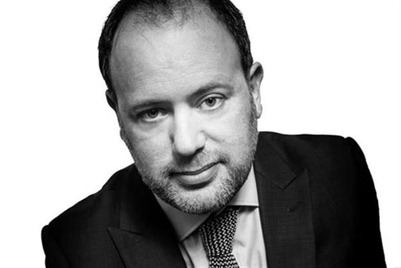
While technology is overcoming the biggest challenges of streaming live sports, including lag, data storage and compression, if commercial models do not catch up, traditional broadcasters could find themselves being muscled out of the game, according to Mehul Kapadia.
Kapadia manages the Formula 1 business at Tata Communications, which is the global connectivity provider for the sport event. He believes the single biggest challenge facing traditional broadcasters as sporting rights become ever more competitive (and expensive) is in figuring out how to monetise digital and social consumption.
“Commercial models, more than technical barriers, are driving the challenges for broadcasters,” he tells Campaign. “Technology becomes available to allow broadcasters to distribute content in new ways across a variety of platforms, but there is still lag before it becomes adopted, because they have to be convinced of the commercial model first.”
While technology is democratising content—with faster connectivity and improvements in data compression allowing people in countries like India and the Philippines to have access to sports events through their mobile phones—the challenge facing broadcasters is “how to make money from it”, Kapadia says.
“Viewers might be following the sport on Twitter, Facebook or as news updates on a news app, so on those platforms you can curate the experience in a completely different way with images, commentary, video snippets. You might also want to create regional feeds so viewers in Japan and India are served different graphics, and you can have regional advertising partners. The technology can enable a lot of this to happen, it will come at a cost because you will have to manage multiple feeds and channels,” he says.
“It is difficult to monetise and if you already have a strong revenue model with traditional broadcast you need to be a bold person to change that,” he adds.

Many broadcasters have recognised the shift in viewing habits—whereby viewers increasingly want more control of what they watch—and have rolled out products to address this. For example, Sky in the UK has a mobile video-on-demand app, Sky Go, while Star India has streaming platform Hotstar.
“They could be the Netflix and Amazon equivalent if they wanted to, if they recognise that the lines between a traditional broadcaster and a social platform are blurring,” Kapadia says.
While Amazon has been aggressively pursuing sports rights, muscling out many broadcasters which can’t compete on price, Kapadia believes broadcasters have experience on their side.
“The more progressive broadcasters will have some disproportionate strengths of content libraries and viewers who have been hooked for a long time, and folks like Amazon will have the advantage of being able to offer viewers delivery of goods for free as part of the subscription,” he says. “Each will appeal differently.”
Amazon came under flack from tennis fans over its coverage of the US Open last year, with many criticising its lack of catch-up options, poor picture quality and limited coverage. The retailer-cum-streaming service has since made significant investments in its sports streaming ambitions, and is focusing on enable Prime subscribers to control nearly every component of their viewing experience, including how, when and where they watch.
However, while Kapadia believes personalisation of sports viewing will increase, with viewers able to choose which team, driver or athlete to follow—there is still a role for curation.
“A lot of sports that we watch, we don't necessarily know the ins and outs. As a fan while it is great that we can select, we should also know the right things to select to understand the story. That might not be about who is leading the race, rather the action could be happening further back where someone’s tyre has just burst,” he says.
“Curation of that story is still really important, and that is the role of the broadcaster.”
Tata Communications has been the global connectivity provider for Formula 1 for eight seasons this year. In this role, the Indian telco enables video feeds to over 190 countries and territories, working with 25 global broadcasters, with more than half a billion people watching every season.
It also hosts the official F1.com website, which serves 44.2 million unique users and attracts up to 7 million users on a race weekend, and the F1 app, which has nearly 4 million unique users. Last season, the average number of unique users on F1.com and the F1 app was 11% higher than in 2017, with significantly more content being viewed on these platforms.
Looking ahead, Kapadia predicts 360-degree video will begin to gain traction in sporting events like the F1, offering fans a more immersive way to experience sport. More so than virtual reality, he believes, which is more challenging due to the added device it requires.
“The mobile phone has become an extension of us, it is no longer a separate thing. That is why augmented reality (AR) and 360-degree video will have a bigger play, allowing you to see sports all angles,” he says.


+(900+x+600+px)+(3).png&h=334&w=500&q=100&v=20250320&c=1)
+(900+x+600+px).jpg&h=334&w=500&q=100&v=20250320&c=1)
.jpg&h=334&w=500&q=100&v=20250320&c=1)


.jpg&h=334&w=500&q=100&v=20250320&c=1)
+(900+x+600+px).png&h=334&w=500&q=100&v=20250320&c=1)


+(900+x+600+px)+(1).png&h=334&w=500&q=100&v=20250320&c=1)


.jpg&h=268&w=401&q=100&v=20250320&c=1)

.jpg&h=268&w=401&q=100&v=20250320&c=1)


